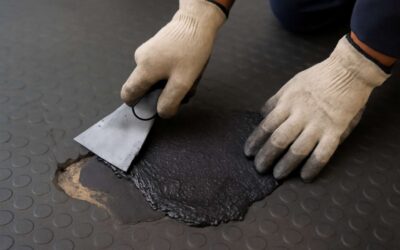Rubber patio tiles are a safe, affordable, and sustainable option for your outdoor space. They’re ADA compliant, and they don’t contain any metal, wood, or harsh chemicals that can cause reactions in people with sensitive skin or allergies.
Safety Features
One of the main reasons to use rubber patio tiles for a patio or playground area is to make it safer for kids to play. Because the tile material is more shock absorbent than stone, it’s less likely to jolt kids and cause injuries if they fall. It also provides excellent traction, so kids won’t slide or trip when they run and jump on the surface of the rubber tile.
Color Options
Because rubber is an inexpensive material to produce, it’s possible to find a wide variety of colors for your outdoor patio flooring. These tiles come in bright, colorful styles that are reminiscent of puzzle pieces, or you can go with a more neutral black or gray to match your home’s decor.
The resulting flooring is comfortable to walk on and easy to clean. It’s also durable and resistant to abrasion and damage from wear and tear, making it an ideal choice for high traffic areas.
Eco-Friendly
The best rubber patio tiles are made from recycled rubber, which helps keep tires out of landfills and reduces the environmental impact of production. The reclaimed rubber can be molded into shapes like squares and rectangles, but it’s often easier to cut the tiles into irregular shapes to fit around corners or other awkward spots.
Adhesive Required for Installation
The first step in installing rubber patio tiles is to choose the right adhesive for the job. This will help ensure the tiles are securely stuck to the surface and won’t shift or move while the adhesive dries. Then, you can start placing the tiles in place. It’s a good idea to work in small sections at a time, so you don’t waste any of the adhesive on a single area.
Depending on the type of rubber you choose, your tiles may need to be installed over a concrete or asphalt base. It’s a good idea to add a layer of protection over these surfaces, like pea gravel or sand, so the tiles will be less likely to become damaged by water.
Another consideration is whether you want to install your rubber tiles with a glue-down or dry-lay installation method. If you plan to install them with a dry-lay installation, you’ll need to use an adhesive that’s specifically designed for this purpose. It’s important to follow the instructions on the package carefully and read them fully to make sure you’re using the correct product for your project.
A good quality adhesive should last you a long time, so you shouldn’t need to replace it in any significant quantity. If you need to replace it, be sure to check the manufacturer’s warranty information before buying.
Interlocking Shapes
If you’re installing a rubber patio floor on an uneven surface, it’s a good idea to consider interlocking tiles. These are available in a variety of shapes, such as “dog-bone” and “Z-brick,” so you can create a design that suits your needs without worrying about adhering to an uneven surface.


0 Comments